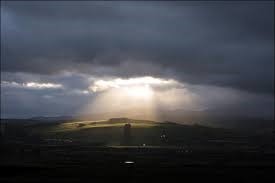Parshas Metzora – Shabbos HaGadol
Just Have Faith!
“Speak to all the congregation of Israel, saying, “In the tenth day of this month they shall take every man a lamb, according to the house of their fathers, a lamb for a house.” (Exodus 12:3)
The Shabbos before Pesach is called Shabbos HaGadol, the Great Shabbos.
What is the reason that this Shabbos is called the Great Shabbos?
The Tur (chapter 430) says that on the 10th day of the month of Nisan the Jews were commanded to take a sheep and set it aside for the Korban Pesach (Pesach offering). The head of each family took a sheep and tied it to the foot of his bed. Each one did this knowing that the sheep was the god of the Egyptians. Their act of bravery showed their total faith in Hashem. When the Egyptians saw what the Jews were doing, they asked, “What are you doing with these sheep?” “We are putting them aside in order to slaughter them as an offering for Hashem” the Jews replied. The Egyptians were enraged at the idea that their god was going to be sacrificed. Hashem performed a great miracle, and the Egyptians were powerless to stop the Jews. The Egyptians were also powerless to even express their anger.
Rabbi Dr. Nosson Chayim Leff (Torah.org) quotes the Chiddushei HaRim and the Sfas Emes who give a different answer as to why this Shabbos is called Shabbos Hagadol. They say that there are three other instances in which the word “gadol” was used. We can conclude from those other contexts what Chazal, our Rabbis of blessed memory, may have had in mind when they used the word “gadol” by Shabbos HaGadol.
One of those instances is the term “Anshei Kenesses HaGedola” — the men of the Great Assembly. This term refers to our Torah leaders in the early years of the Second Beis HaMikdash. The Talmud (Yoma 69B) explains that the assembly was called “Gedola”, Great, because they restored Hashem’s crown to its former glory. How did they restore it?
Moshe Rabbeinu referred to Hashem (Devarim 10:17) as “HaGadol, HaGibor, VehaNorah”, “the Great, the Mighty, and the Awesome”. Later generations could not in all honesty apply those words to Hashem. Yirmiyahu, the prophet, witnessed the Babylonians desecrating the Beis HaMikdash, and asked: “Where is Hashem’s awesomeness?” Seeing no sign of Hashem as being awesome, he deleted the word “VehaNorah”. Yirmiyahu (32:18) referred to Hashem only as “HaGadol, HaGibor”.
When the prophet, Daniel, saw how the Babylonians oppressed their Jewish captives, he asked: “Where is Hashem’s might?” Seeing no evidence of Hashem’s “might,” Daniel deleted the word “HaGibor” and referred to Hashem (Daniel, 9:4) only as: “HaGadol Vehanora”.
The Anshei Kenneses HaGedola said that, on the contrary, what the Jews witnessed was, in fact, powerful evidence of Hashem’s might and awesomeness. Were it not for His great might, He would not have been able to stand by as His people were oppressed. And were it not for His awesomeness, the Jewish people would have ceased to exist. Thus, interpreting the evidence differently, the Anshei Kenesses HaGedola recognized that Hashem is indeed mighty and awesome. Therefore, they reinserted the attributes of “HaGibor VeHanora” into our understanding of Hashem. To this day, we say all those words in the first bracha of Shmone Esrei. That was indeed “restoring Hashem’s crown to its former glory”!
The Sfas Emes sums this up and explains that the word “gadol” (as in “Shabbos HaGadol”) refers to the ability to see through apparent reality and to perceive Hashem’s Omnipresence. Our ancestors demonstrated this ability in Egypt when they dared to prepare the deity of their former masters for slaughter. That action required personal bravery.
The Bach (on the Tur 430) asks a very insightful question. We always celebrate a Yom Tov on its calendar date because that date is infused with a special spirituality in every year that follows. If so, why is the miracle that occurred in Egypt on the 10th of Nisan associated annually with the Shabbos before Pesach and not with the 10th of Nisan when this event took place? True, the miracle occurred on Shabbos of that year, but wouldn’t it have been more appropriate to designate the 10th day of Nisan, no matter when it falls, as the day of commemoration?
Sefer Hatoda’ah explains that the miracle only transpired because it was Shabbos! Normally, there would have been nothing so unusual about the Jews putting sheep aside. What caught the Egyptians’ eyes was that it was Shabbos, and they knew that the Jews were forbidden to handle the live animals on Shabbos. The Egyptians were curious, and questioned what the Jews did. That is how the miracle came about. Thus, the miracle is attributed to Shabbos.
Rabbi Yaakov Asher Sinclair says that each of the 10 plagues halted, temporarily, on Shabbos. The 10th of Nisan occurred during the plague of Darkness. Had the Jews walked their sheep through the street any day other than Shabbos, the Egyptians would not have seen them. There would not have been a miracle. Thus, it was only due to Shabbos that the miracle occurred.
The Sfas Emes says that the act of taking the lambs in readiness for a sacrifice was considered as if the Jews had observed Shabbos! The basic idea expressed in observing Shabbos is the acknowledgement that Hashem created the world in six days. By taking the lambs, the Jews rejected idolatry and accepted Hashem. This was not merely an action which took place on the tenth of Nisan. This was a watershed of Jewish history. The Jews had joined Hashem in a Shabbos! (Dr. Nosson Chayim Leff)
When our ancestors in Egypt took the sheep, the Egyptian god, to sacrifice, it was suicidal! Their Egyptian masters should have slaughtered the Jews. The Jews showed total faith in Hashem and Hashem protected them.
The Final Redemption will mirror the redemption from Egypt. May we all reach the level of total faith in Hashem. May that herald Hashem’s performance of miracles for us.
May that herald the arrival of Eliyah HaNavi and the ultimate redemption with the coming of Moshiach.




